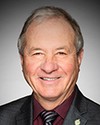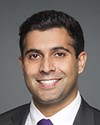Okay.
Good morning, Madam Chair, members of the committee. Thank you for inviting Helios to appear before you today.
Helios is a U.K. aviation consultancy working for clients around the world and across the whole of the aviation industry. I lead the airport consultancy business within Helios and have 26 years of aviation experience. Helios is currently contracted to provide independent technical analysis and support to the GTAA as they move forward in the delivery of their latest five-year noise management action plan.
Over the past two and a half years, Helios has completed one study for Nav Canada, two for the GTAA, and one for Aéroports de Montréal. I have submitted four reference documents ahead of today, of which the first two were written by Helios. I'll come on to explain each of those documents.
The first one is the “Independent Toronto Airspace Noise Review”, prepared for Nav Canada, which provides noise mitigation recommendations and conclusions focused on the Toronto airspace, as well as a lot of informative background information.
The second document is “Best practices in noise management”, which was prepared for the GTAA and provides an excellent overview of 11 different noise management practices across 26 international airports that are comparative to Toronto Pearson.
The third document is an analysis paper prepared by the Airports Council International and published earlier this week, addressing the future of aviation noise. This was prepared in response to the recent release by the World Health Organization on their latest environmental noise guidelines.
The final document that I've submitted is a paper from the International Journal of Environmental Research and Public Health. The paper concludes that the data used by the World Health Organization and the analysis conducted in establishing the relationship between aviation noise and annoyance has, in the author's words, had “a huge impact on the final recommendations”. The author goes on to conclude that the recommended noise level to avoid adverse health impacts from aviation noise should be eight decibels higher than those proposed by the World Health Organization. An eight-decibel increase is substantial. It is generally accepted that the human ear perceives a 100% increase in volume for every 10-decibel increase.
Aviation noise management is a complex, multi-faceted topic, and I'm going to have a chance to only make a microscope dent in it today.
Helios finds the same aviation noise complaints and challenges everywhere we go. However, the solutions differ, because the urban, social, geographic, political, regulatory and operational environments are never the same.
I must apologize, for I am about to make a generalization. It is the aircraft that makes the noise, yet time and again, the party not present at public meetings, and generally the last at the table, are the airlines. Meaningful progress is only possible if all stakeholders are present at the table on a voluntary basis, work corroboratively, are prepared to give and take, make tough decisions and are committed to the objectives of delivering noise reduction and mitigation.
Moving noise from community A to community B on a long-term or permanent basis for no other reason than to pacify community A is not a solution. It is only likely to inflate the problem exponentially. The short-term relocation of noise on a predictable and regular basis, often referred to as “noise sharing” or “noise respite”, can be a valuable mitigation in some situations. Many airports have worked for decades and invested millions of dollars to reduce or mitigate noise, yet they still have a large number of residents who are not satisfied. This does not mean that we should not continue to try, as major improvements have been made and there is more that can be achieved in the weeks, months and years ahead.
One of the common questions raised by this committee is about what national standards there are to protect people from aviation noise. As far as I'm aware, there are two in Canada.
The first is set by Transport Canada and requires airports to prepare a noise exposure forecast, which is used to inform urban zoning strategies. The acoustician, Dr. Colin Novak, spoke about some of the challenges with using the NEF metric. I suspect, based on trends elsewhere in the world, that public tolerance of aviation noise has reduced since the NEF 25 and NEF 30 levels were set by Transport Canada, and I offer that the majority of noise complaints come from people outside of the geographic areas enclosed by these NEF contours.
The second standard is the aircraft noise certification requirements specified by ICAO, which have become more stringent with each generation of aircraft, meaning that aircraft have become quieter. Aircraft remain in active service for 30-plus years, so it can take a long time for noisier aircraft to be retired.
I would like to provide an element of perspective on what flights are in the night at Toronto Pearson. An analysis being undertaken by Helios Technology Ltd. for the GTAA shows that over 80% of night flights are passenger services, with the remainder being cargo, at 10% to 15%, or general and/or business aviation.
Night flights account for 3% of all flights at Toronto Pearson. Airports and community groups argue about whether the number of noise complaints recorded is an accurate indication of the scale of the problem. I counsel that you look at complaints as only one piece of the wider evaluation as to the scale of aviation noise as a problem. There are many factors that mean you cannot directly compare the number of complaints between airports. Identifying the percentage of new complaints each year can be an informative metric, but again, it should never be considered in isolation.



